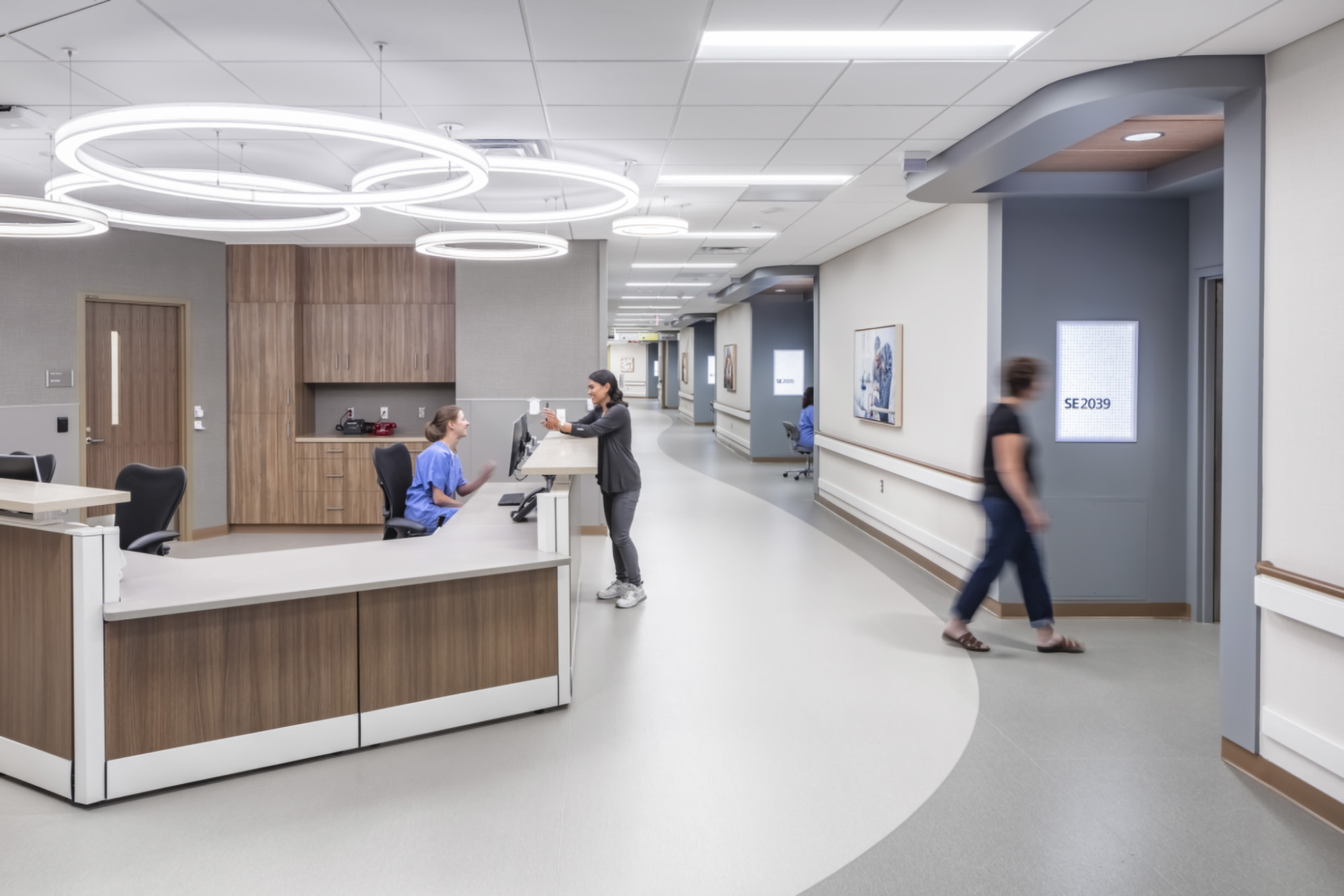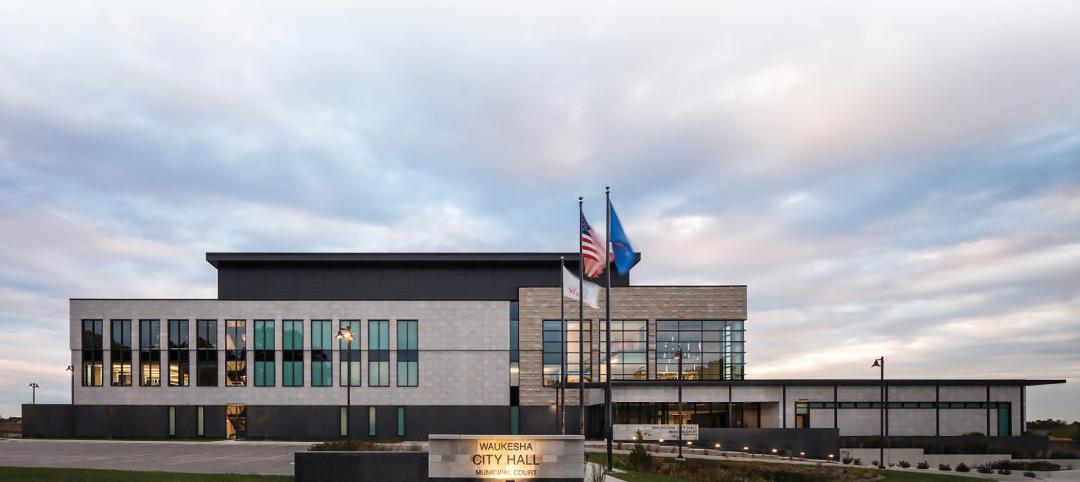Healthcare facilities are a backbone for their communities, necessary for sustaining the health and wellness of all who live there. A lot goes into creating healthcare environments that work for both the patients they serve and the staff who provide critical care—from having the right number of beds to planning strategic layouts that allow providers to do their best work efficiently to finding feasible solutions amid rising costs.
That’s where designers come in, working closely with healthcare teams to develop spaces that are customized to support each organization’s unique needs. Jessica Sweeney, Senior Planner at BWBR, is one such designer helping to bridge the gap between architecture and healthcare. Formerly a strategist and operational leader for hospitals and clinics, she has worked with staff across the care continuum and witnessed first-hand how design can address roadblocks that organizations face.
In the latest episode of Side of Design, we sat down with Jessica to discuss the issues facing healthcare today, and how our planners’ personalized approach and specialized experience can make a meaningful impact.
Healthcare by Design
Healthcare planners help lay the groundwork that allows a facility to optimize operations—working with organizations to determine what spaces are needed, how large a facility should be, where it should be located, and driving conversations about how staff, patients, and others that are coming into the building need to use the space.
Considerations are made to determine how design can help patients feel more comfortable and in-control in healthcare settings, as well as how providers will benefit from spaces with enhanced functionality and flexibility. And with her extensive healthcare background, Jessica acts as a “translator” between the worlds of healthcare and architecture.
“My goal is to help staff make the space as functional as possible and help our designers make that space as functional as possible,” says Jessica. She has a key role in finding and analyzing data, working with data partners “to really hone in on how we’re going to use that space in the future, so that our planners and others on the team can figure out what spaces we need and how many of them.”
Both data and design also play a role in balancing innovation for the future with understanding of current needs. “We push the client to continue to move forward so that they are successful in the future, but also support the staff that are doing the work in the spaces right now,” she says.
Smooth Operators
In healthcare settings where staff are often spending long hours at work and patients may be facing lengthy stays, it’s all the more crucial that facilities meet their needs. Stakeholder engagement is the key to deeply understanding workflows and inefficiencies.
“You’re designing for the staff who are using the space and the public who has to be there—they don’t want to be there,” Jessica explains. “We love when we get to work with patients to design, but that’s not always possible. But the patients are the ones that have to use the space.”
By closely partnering with healthcare teams, designers can also discover cost-saving opportunities that delay the need for major capital investments without sacrificing the quality of care. Jessica discusses a project where an organization’s leadership thought they would need a new facility due to immense growth they were seeing. When the BWBR team completed walkthroughs to observe processes and talk to staff, they saw other possibilities to support the expanding patient population.
“Through those situations we realized they had a lot of operational opportunities,” she says, which led the team to determine they could work within the existing facility. “They could plan for the new building for the future, but right now there were other things that they could do that would solve their issues for not just the immediate term, but for the next couple of years.”
Counting the Cost
Along with identifying opportunities, BWBR planners also work with clients to design environments within constraints such as budget. “Healthcare costs are increasingly high, so our clients can’t always afford everything they initially think they need or know they need,” Jessica explains. “So, we have to figure out how to make those spaces more serviceable, make them more functional so that they can build what they need to continue to provide the care.”
The stakes are high when facilities no longer meet demands, particularly in rural areas that depend on critical access hospitals. “Oftentimes the organization is the biggest employer in the community, so we are tasked with facilitating a design that needs to exist, not just should exist,” she says. “It has to exist because it drives the health of the community, both culturally and financially.”
Monetary costs are not the only challenges encountered in healthcare projects. Changes in a facility’s design result in real impacts for users, which means designers must weigh the pros and cons of major alterations. “Changing operations has a cost, whether they’re worried about losing staff or patients being unhappy because they might have a different process,” she says. “We’re not designing in a vacuum—we’re designing for real people with real processes and real illnesses, and everything has a cost to change. Sometimes that cost is small and very worth it, and sometimes it’s not.”
Jessica and the other planners at BWBR are skilled at partnering to determine the right solutions for each unique organization and facilitating buy-in from staff, all toward the goal of creating an environment that makes providers’ jobs easier, helps operations run smoother, and improves patient outcomes.
More from Author
BWBR | Sep 9, 2024
Exploring the cutting edge of neuroscience facility design
BWBR Communications Specialist Amanda Fisher shares the unique considerations and challenges of designing neuroscience facilities.
BWBR | Jun 20, 2024
How student housing developments are evolving to meet new expectations
The days of uninspired dorm rooms with little more than a bed and a communal bathroom down the hall are long gone. Students increasingly seek inclusive design, communities to enhance learning and living, and a focus on wellness that encompasses everything from meditation spaces to mental health resources.
BWBR | May 23, 2024
The unique design needs of Critical Access Hospitals
BWBR healthcare principals Brad Krump, AIA, and Scott Kirchner, AIA, discuss their industry experience and passion for supporting the role that critical access hospitals play in their communities.
BWBR | Mar 8, 2024
Conference room design for the hybrid era
Sam Griesgraber, Senior Interior Designer, BWBR, shares considerations for conference room design in the era of hybrid work.
BWBR | Jan 30, 2024
The practical magic of the design process
Designers bridge very different worlds, and there can be an air of mystery about the process and the various roles within it. We invited some of the BWBR team to clear things up.
BWBR | Aug 10, 2023
The present and future of crisis mental health design
BWBR principal Melanie Baumhover sat down with the firm’s behavioral and mental health designers to talk about how intentional design can play a role in combatting the crisis.
BWBR | May 24, 2023
The future of work: What to expect in 2023
While no one disagrees that the workplace has undergone tectonic changes, it is less clear how to understand these shifts and synthesize them into practical action for the coming year.
BWBR | Apr 13, 2023
Urgent care facilities: Intentional design for mental and behavioral healthcare
The emergency department (ED) is the de-facto front door for behavior health crises, and yet these departments are understaffed, overwhelmed, and ill-equipped to navigate the layered complexities of highly demanding physical and behavioral health needs.
BWBR | Apr 6, 2023
Design for belonging: An introduction to inclusive design
The foundation of modern, formalized inclusive design can be traced back to the Americans with Disabilities Act (ADA) in 1990. The movement has developed beyond the simple rules outlined by ADA regulations resulting in features like mothers’ rooms, prayer rooms, and inclusive restrooms.















